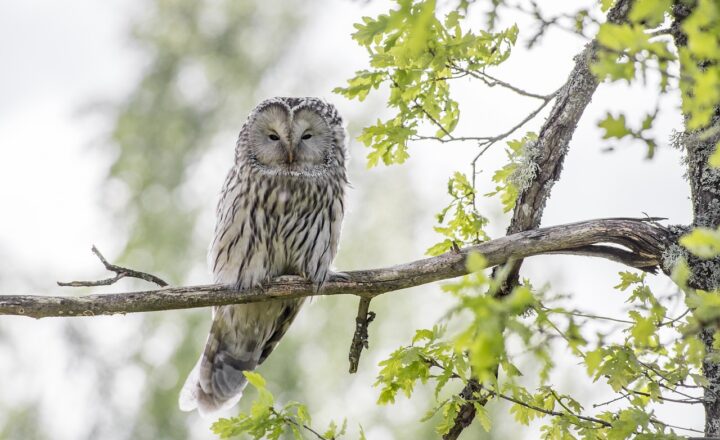The Most Fascinating Animal Behaviors and What They Tell Us About Nature
November 16, 2024

Animal behavior is a captivating subject that offers us insight into the complexities of the natural world. From the elaborate courtship rituals of birds to the cunning survival strategies of predators, the study of how animals interact with their environment and each other reveals the incredible adaptations that have evolved over millions of years. Understanding these behaviors not only enhances our appreciation for wildlife but also teaches us valuable lessons about ourselves and the world we inhabit.
1. The Art of Courtship: Animal Mating Rituals
One of the most fascinating aspects of animal behavior is courtship rituals. Many species engage in elaborate displays to attract mates, often involving vibrant colors, intricate dances, and distinctive sounds.
For instance, male birds of paradise perform mind-boggling courtship dances characterized by vivid plumage and complex movements, which help them to allure females. These displays are not just about beauty; they demonstrate the male’s genetic fitness and ability to thrive in their environment.
Similarly, the male peacock showcases its resplendent tail feathers in an astonishing display that can span almost six feet in length. This grandeur serves as a signal to females, indicating vigor and health, thus increasing its chances of reproduction.
2. Social Structures: Cooperation and Competition
The social structures of various species range from solitary to cooperative living, each with remarkable implications for survival. Wolves, for example, exemplify social living through their pack dynamics. The pack functions with a complex hierarchy and cooperative hunting strategies, emphasizing teamwork in taking down prey much larger than themselves.
On the contrary, in the competitive environment of the animal kingdom, understanding aggression is equally essential. For instance, male elephant seals fiercely defend territories, engaging in brutal battles to secure mating rights with females. These behaviors highlight the balance of cooperation and competition, showcasing the underlying principles of survival during mating seasons.
3. Communication: The Languages of the Wild
Communication among animals is a sophisticated sphere that displays nuances and complexity. Many species have developed distinct forms of communication through vocalizations, body language, and even pheromones.
Take dolphins, for example. They utilize a range of clicks, whistles, and body movements to convey messages, coordinate hunting efforts, and establish social bonds. The idea of dolphin communication resonates with the same intricacies found in human interactions, thus encouraging us to ponder the conventions of communication across species.
In addition, ants communicate through pheromones, leaving chemical trails that direct other ants to food sources or warn of danger. This highly effective form of tactile communication illustrates a system where information is shared efficiently within the colony, contributing to group survival.
4. Tool Use: Intelligence in the Animal Kingdom
The ability to use tools is often considered a defining characteristic of intelligence, and numerous animal species have demonstrated skill in this behavior. For example, studies have revealed that chimpanzees use sticks to extract termites from mounds, showcasing problem-solving and manual dexterity.
Other notable examples include crows, which are recognized for their extraordinary ability to fashion tools from leaves and twigs to access food. These remarkable behaviors not only unveil the intellectual capacities of these animals but also provoke discussions about the nature of intelligence across species.
By exploring tool use, we can learn more about the evolutionary trajectories that fostered such abilities and their implications for our understanding of animal cognition.
5. Migration: Nature’s Phenomenal Journeys
Migration is one of the most dramatic displays of animal behavior, characterized by seasonal long-distance travel. The annual migrations of species such as monarch butterflies or Arctic terns illustrate extraordinary navigational skills and the instinctual drive to survive.
Monarch butterflies travel thousands of miles from North America to central Mexico, achieving remarkable navigational feats while relying on climate cues and environmental landmarks. Similarly, Arctic terns migrate an astounding 44,000 miles annually, demonstrating endurance across diverse terrains and climates.
These behaviors highlight the evolutionary advantages of migration, including access to food resources and breeding grounds, while also inviting us to ponder the ongoing impacts of climate change on migratory pathways.
Conclusion: What Animal Behavior Tells Us About Nature
By uncovering the riddles of animal behaviors, we gain profound insights into the interconnectedness of life on Earth. From intricate social structures to spectacular migratory patterns, understanding animal behavior enriches our appreciation for the complexity of nature. Each behavior signifies adaptation, survival strategies, and evolutionary changes shaped by the environment.
Furthermore, as we recognize the vast capabilities of the animal kingdom, we are reminded of our responsibilities toward their preservation. Protecting habitats, respecting ecosystems, and mitigating climate change are urgent calls to action, ensuring that future generations will continue to witness, study, and learn from the fascinating dynamics of the wild.
As we delve into the enthralling world of animal behavior, we realize that these insights not only reflect nature’s ingenuity but also prompt introspection about human existence in a shared ecosystem. Through education, awareness, and respect for wildlife, we can foster a sustainable future where both humans and animals thrive together.







